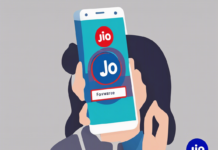In today’s fast-paced world of information overload, visual storytelling has emerged as a powerful tool to convey messages effectively. As human beings, we are visual creatures, and we tend to process and retain information better when it is presented in a visual format. Visual storytelling combines the art of storytelling with compelling visuals to create an engaging and memorable experience for the audience. Whether you are a content creator, marketer, educator, or simply someone who wants to enhance their communication skills, mastering the art of visual storytelling can help you convey your message more effectively.
The Power of Visual Storytelling
Visual storytelling has the unique ability to evoke emotions, spark imagination, and create a lasting impact on the viewer. By leveraging the power of visuals such as images, videos, infographics, and animations, storytellers can bring their narratives to life in a way that resonates with their audience. Visual elements not only grab the viewer’s attention but also help them connect with the story on a deeper level. Whether it’s a brand trying to connect with its customers, an educator trying to explain a complex concept, or a filmmaker trying to evoke a particular emotion, visual storytelling can be a game-changer in effectively conveying messages.
Elements of Visual Storytelling
1. Images
Images are one of the most fundamental elements of visual storytelling. Whether it’s a photograph, illustration, or graphic design, images have the power to convey emotions, set the tone, and capture the essence of a story. High-quality, relevant images can make a story more engaging and impactful.
2. Videos
Videos are an incredibly powerful medium for visual storytelling. They have the ability to transport the viewer to different places, evoke emotions, and create a compelling narrative. Whether it’s a short video clip, a documentary, or an animated video, videos can captivate the audience and deliver messages in a dynamic and engaging way.
3. Infographics
Infographics are a great way to present complex information in a visually appealing and easy-to-understand format. By combining text, images, and data visualizations, infographics can help break down information into digestible chunks and make it more shareable and memorable.
4. Animations
Animations add a touch of magic to visual storytelling. Whether it’s a simple motion graphic or a sophisticated animated short film, animations can bring characters and stories to life in a way that captivates the audience and leaves a lasting impression.
Tips for Effective Visual Storytelling
1. Know Your Audience
Before creating a visual story, it’s essential to understand your target audience. What are their interests, preferences, and pain points? Tailor your visuals to resonate with your audience and make sure the story you’re telling is relevant to them.
2. Keep it Simple
Simplicity is key to effective visual storytelling. Avoid cluttering your visuals with unnecessary elements and focus on conveying your message in a clear and concise manner. Remember, less is often more when it comes to visuals.
3. Embrace Emotions
Emotions are a powerful tool in storytelling. Use visuals to evoke emotions such as joy, sadness, surprise, or excitement to create a deeper connection with your audience. Emotionally resonant stories are more likely to be remembered and shared.
4. Maintain Consistency
Consistency is important in visual storytelling. Use consistent colors, fonts, and design elements throughout your visuals to create a cohesive and unified story. A consistent visual language helps reinforce your brand identity and message.
Tools for Visual Storytelling
1. Canva
Canva is a popular graphic design tool that allows users to create stunning visuals, including social media graphics, presentations, posters, and more. With a user-friendly interface and a wide range of templates, Canva is a great tool for creating visually appealing content.
2. Adobe Spark
Adobe Spark is a versatile design tool that enables users to create graphics, web pages, and videos quickly and easily. With customizable templates and intuitive design features, Adobe Spark is a valuable tool for visual storytelling across various platforms.
3. Piktochart
Piktochart is a powerful tool for creating infographics, presentations, posters, and reports. With a drag-and-drop interface and a library of customizable templates, Piktochart makes it easy to create visually engaging content without any design experience.
Conclusion
In conclusion, visual storytelling is a valuable skill that can help individuals and organizations effectively communicate their messages in a compelling and engaging way. By leveraging the power of visuals, storytellers can capture the attention of their audience, evoke emotions, and create a lasting impact. Whether you’re creating content for social media, presentations, websites, or any other platform, mastering the art of visual storytelling can make your stories more impactful and memorable.
Frequently Asked Questions (FAQs)
1. What is visual storytelling?
Visual storytelling is the art of conveying a narrative using visual elements such as images, videos, infographics, and animations to create an engaging and memorable experience for the audience.
2. Why is visual storytelling important?
Visual storytelling is important because it helps capture the audience’s attention, evoke emotions, and convey messages in a compelling and memorable way. It can make complex information more digestible and increase the likelihood of the audience retaining the information.
3. How can I improve my visual storytelling skills?
To improve your visual storytelling skills, start by understanding your audience, keeping your visuals simple and engaging, embracing emotions, and maintaining consistency in your visual elements. Practice creating different types of visual content to enhance your skills.
4. What are some common tools for visual storytelling?
Some common tools for visual storytelling include Canva, Adobe Spark, Piktochart, and many more. These tools offer a range of features and templates to help you create visually appealing content without the need for extensive design skills.
5. How can visual storytelling be used in marketing?
Visual storytelling is a powerful tool in marketing as it can help brands connect with their audience on an emotional level, communicate their brand message effectively, and differentiate themselves from competitors. By using compelling visuals, brands can create engaging content that resonates with their target customers.








